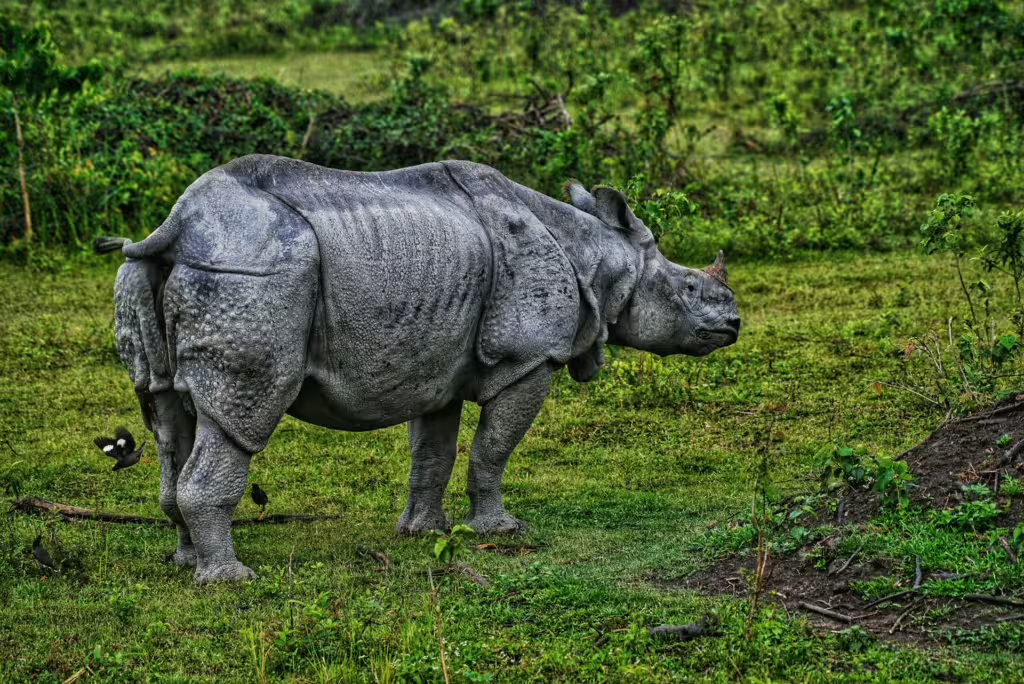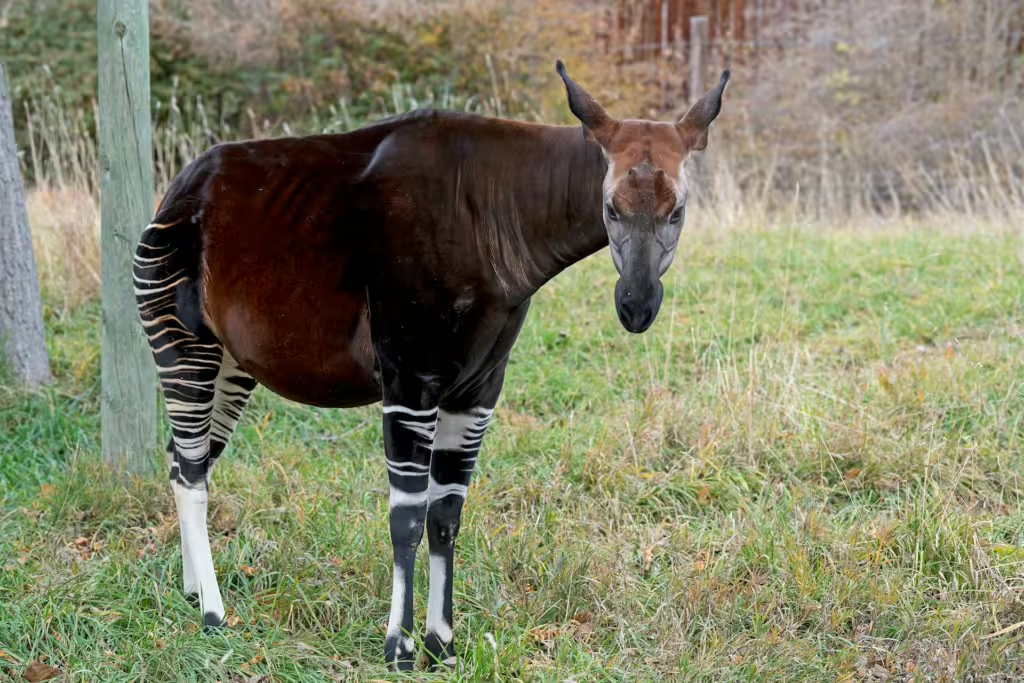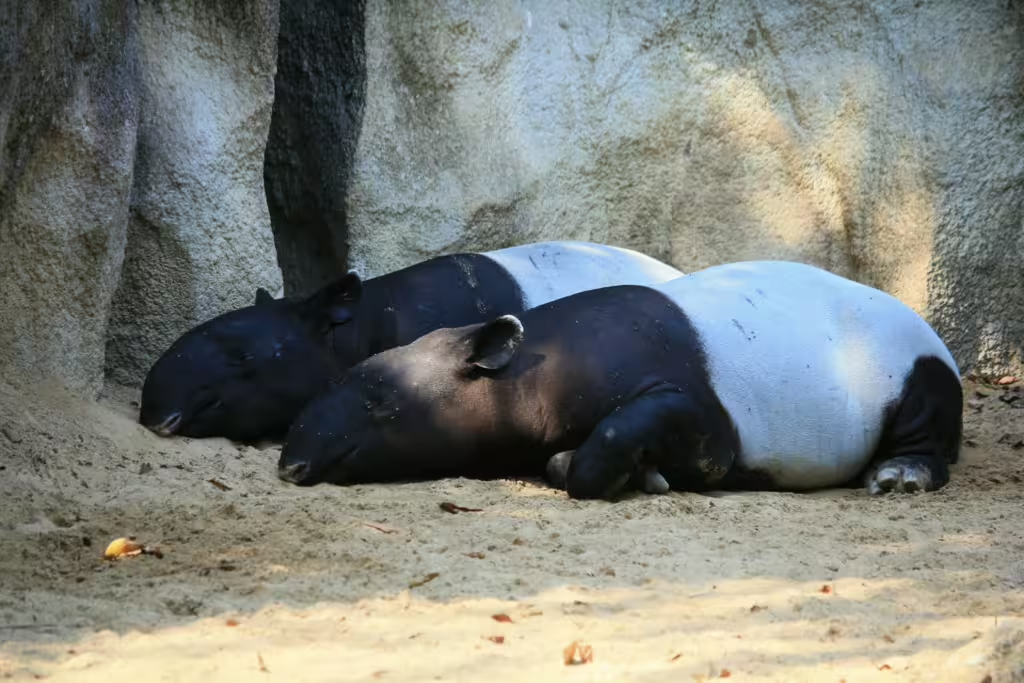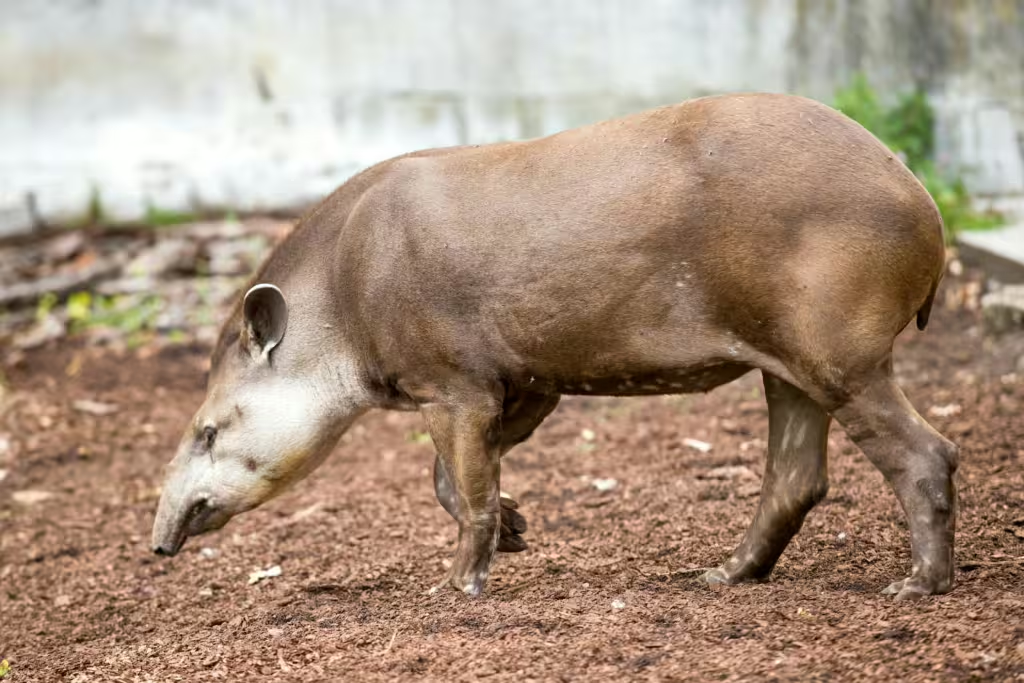The jungles and rainforests of the world are home to some of Earth’s most beautiful and colorful creatures. Birds with vibrant plumage, emerald-green serpents, and bespeckled feline apex predators to name a few. But those are not the animals we are here to talk about today. The beasts that we have come to discuss live on the forest floor, meandering amid the dense undergrowth. These terrestrial mammals have carved out their own ecological niches within these forest ecosystems and have become crucial to their continued survival.
Today we are shining a light on these jungle giants, animals that are often so shy and elusive, many people might not even know they exist. Though these beasts tend to spend most of their days in the shadowy depths of the forest, their size, power, and ecological importance makes them absolutely fascinating to behold. Many of the animals we will discuss in this article are quite large, colossal even, while others are relatively small. Big or small, these herbivores are vital to maintaining the balance of their environment.
In this article, we will talk about a slew of amazing animals from elephants to tapirs and even gorillas. We will speak about why they are so important and how they, like so many rainforest animals, are in grave danger thanks to humanity. So let us delve our way into far-flung jungles and search for the mysterious giants that make the forests hum.
The Tapir: Elusive Herbivore of the Rainforest
The tapir, for those who don’t recognize the name, is the unusual-looking animal pictured on the cover of this article. These large, though not huge, mammals are one of the most unique and often overlooked animals in the animal kingdom. Tapirs resemble something of a large pig with a prehensile snout, but they actually belong to a family all their own, namely the Tapiridae. This family contains a four of the oldest living mammals in the world, having evolved around 50 million years ago. Those four tapir species live in two very distant parts of the world: Central America, South America, and Southeast Asia. In the jungles of South America, the Brazilian tapir (or lowland tapir) is the most common, but its cousin, the Malayan tapir, can only be found in Southeast Asia.
Tapirs are large, herbivorous creatures that can weigh between 300 and 700 pounds. Some species are larger than others but nearly all tapirs tend to be solitary creatures, most at home in tropical forests where they use their excellent sense of smell to forage for fruit, leaves, and twigs. That same, talented nose comes at the end of a prehensile snout that is actually dual purpose. Its flexibility allows tapirs to grab branches and foliage, much like an elephant does, albeit on a much more modest scale. Either way, the nose enables them to reach for food in the treetops or on the forest floor.
Despite their large size, tapirs are actually incredibly stealthy and elusive creatures. Stout thought they may appear, tapirs are actually excellent swimmers, and can often be found crossing rivers in search of food or new territory. Within their home ecosystems, tapirs act as seed dispersers, spreading their excrement as they meander about the forest paths and contributing to the growth of new plants and the regeneration of the rainforest. Sadly, like so many rainforest inhabitants the world over, tapir populations are incredibly threatened due to habitat loss, poaching, and hunting.
The Indian Rhinoceros: A Horned Giant of the Grasslands and Jungles

The Indian rhinoceros (Rhinoceros unicornis), also known as the greater one-horned rhinoceros, is one of only five species of rhino in the world. Like the tapir, this giant herbivore is a rare throwback to a bygone age, long before the age of man. Native to the Indian subcontinent, Indian rhinos can be found in the jungles and wetlands of northeastern India, Nepal, and parts of Bangladesh, making them quite unlike their savanna-dwelling African cousins. The species is most distinguished from its African relatives by its thick, armor-like skin and the single horn on its head that can grow up to 20 inches long.
Indian rhinos can weigh as much as 5,000 pounds, making it one of the largest mammals in Asia, second only to the Asian elephant. As a result, these animals are considered ecosystem engineers, because their very size and feeding habits see them physically manipulating their environment. Rhinos are grazers and they feed on a mixture of grasses and aquatic plants. They wallow in mud, which they use to cool off and protect their sensitive skin from sun exposure and biting insects. They also use their horns to dig up plants and dig their mud wallows, which is why they are so adept at altering the habitat around them.
Despite their intimidating size and their armored appearance, Indian rhinos are relatively gentle creatures. Like other large, forest mammals, these are solitary creatures, that just want to be left alone to live their placid lives. Unfortunately, the Indian rhinoceros is a vulnerable species and most of its remaining populations are concentrated only in protected areas such as Kaziranga National Park in India. They are threatened by habitat destruction and poaching, as many people still believe rhino horn to have medical or mystical properties.
The Okapi: A Forest Oddity
The okapi is one of the most enigmatic and lesser-known jungle creatures on the planet (as well as a favorite of this particular writer.) These gentle, solitary creatures are the only close relative of their much more popular cousin, the giraffe, and they can only be hiding amongst the trees in central African rainforests. The okapi has a long, dark body, short legs, and striking white-striped markings on its hind legs and rump, looking almost like a strange amalgamation of giraffe and zebra. These black and white markings, along with the drab brown coloring, allows it to disappear when viewed through the lens of dense rainforest foliage.
Unlike its cousin, the giraffe, which thrives in open savannas, the okapi is far more comfortable living in the forest. These herbivores prefer the shaded, dense undergrowth of the rainforest, where they primarily feed on a combination of leaves, fruits, and fungi. Okapis are solitary and elusive, with an excellent sense of hearing and smell that helps them stay hidden. Indeed, much of what we know about okapis comes from research conducted in captivity and through rare sightings by forest rangers.
Rare and shy though they may be, okapis play an important role in their home ecosystems. Like tapirs, these animals serve as essential seed dispersers, spreading seeds throughout the forest as they forage. It is most unfortunate then that t populations are threatened by habitat loss due to deforestation, as well as poaching for their meat and skins. Conservation efforts are underway to protect the okapi and its rainforest habitat.

The Asian Elephant: Majestic Mammals of the Jungle
The Asian elephant (Elephas maximus) is one of the most iconic jungle giants in the world. Native to the forests and grasslands of Southeast Asia, the Indian subcontinent, and parts of Southeast Asia, the Asian elephant is a keystone species that plays a crucial role in shaping the landscape of the jungles they inhabit.
Asian elephants might be smaller than their African cousins but are still incredibly large, standing 8 to 10 feet in height at the shoulder and weighing an astonishing 5,000 pounds (2,300 kg) and standing 8 to 10 feet tall at the shoulder. These gentle giants are herbivores and consume a wide variety of plant material, including grasses, leaves, fruits, and bark. Their massive size allows them to knock down trees and clear large swaths of vegetation, creating open spaces in the jungle that benefit other species by allowing sunlight to reach the forest floor.
Elephants are highly intelligent creatures with complex social structures, and advanced communication methods. They live in matriarchal herds, with the oldest female leading the group and guiding them to food and water sources. Elephant herds communicate with one another using a variety of vocalizations, gestures, and even low-frequency sounds that travel long distances through the ground and can be felt through the elephants’ sensitive foot pads.
The tourist trade has been both a boon and a danger to Asian elephants, as they are constantly disrupted. by encroaching habitat loss, human infrastructure, and poachers. Nevertheless, their popularity has ensured that multiple conservation efforts are focused on saving the elephants. These programs have gone on to create safe wildlife corridors for elephants to move through their habitats and have mitigated continued conflicts with local human populations.
The Baird’s Tapir: A Central American Jungle Giant
Both the Brazilian tapir and the Baird’s tapir live in Central and South America. The Baird’s tapir, in particular, ranges from southern Mexico to western Panama, and is the largest of the New World tapirs. Like its relatives, the Baird’s tapir possesses the same clever, prehensile snout, enabling it to reach for leaves and fruits in the dense rainforest canopy. These animals can weigh upwards of 800 pounds, making them rather formidable as compared to most of the Americas’ other forest herbivores.
Unfortunately, Baird’s tapirs are just as threatened as other species. They are endangered due to deforestation, poaching, and hunting, especially in regions where they come into close proximity with local human populations. Despite their gentle and elusive nature, their size makes them appear quite threatening, which can lead them into conflicts with human beings. Part of this has to do with their nocturnal natures, which means they are mostly seen at night, and can often appear even more threatening as a result. This nocturnal feeding behavior also makes them harder to study, and thus, harder to protect via normal conservation methods.

The Gorilla: A Giant of the Rainforest
We often associate gorillas with mountain habitats but those mountains are still coated in dense forests. Indeed, the western lowland gorilla and the eastern lowland gorilla live in one place on Earth, the dense rainforests of their central African homeland. Gorillas are the largest of the great apes and, like so many creatures on this list, are primarily herbivorous, feeding on a variety of leaves, stems, and fruit. They appear to be gentle, at least from a distance, but these incredibly strong animals can be quite fierce if threatened. Like many great apes, gorillas live in tight-knit family groups led by a dominant male. They are quite intelligent by animal standards and have been known to show near-human intellect at best and a rudimentary understanding of tools at the very least.
Due to their feeding and nesting habits, gorillas play a significant role in their ecosystem by helping maintain the balance of plant life and shape the land to meet their needs. Those feeding habits enable gorillas to shape the forest by reducing the number of dominant plant species in an area, allowing a diversity of vegetation to thrive. As is to be expected, both species of mountain gorilla face significant threats from habitat destruction, poaching, and even disease. As such, these amazing jungle giants are classified as endangered species.
The Malayan Sun Bear: The World’s Smallest Bear
While not as large or as imposing as the other jungle giants we’ve discussed thus far, the Malayan sun bear is no less remarkable. This bear is a fascinating member of its Southeast Asian jungle ecosystem. Well adapted to life in the rainforest, these bears tend to be smaller than just about every other true bear species on the planet. They have short, sleek fur and long claws, which help them climb trees in search of honey, fruit, and insects. The sun bear’s size notwithstanding, these ursine creatures play an important role in maintaining the ecological balance by controlling insect populations and assisting in seed dispersal. Habitat loss and poaching are affecting the sun bear’s population in a big way, however, and they too are threatened as a result of human interference.
True Investigator Says…
As you can see, the amazing jungle giants we’ve explored today are all vital components of their respective forest ecosystems. Each and every one of them is fascinating in their own unique way and each helps in various ways, either by dispersing seeds through their feeding and excrement, engineering their habitat to suit the needs of themselves and other animals, or keeping bug infestations and/or vegetation growth in check.
They all share a distinction as being vital for their habitat, as well as sharing a sort of near-imminent danger of extinction in the next century thanks to the presence of human beings. Whether by poaching or habitat destruction, these fascinating animals are on their way to an ignominious end. We need to do what we can to protect their habitats and their lives, because the wild places of this world will not survive their disappearance; and in the end, neither will we.
Discover more from TrueInvestigator
Subscribe to get the latest posts sent to your email.


